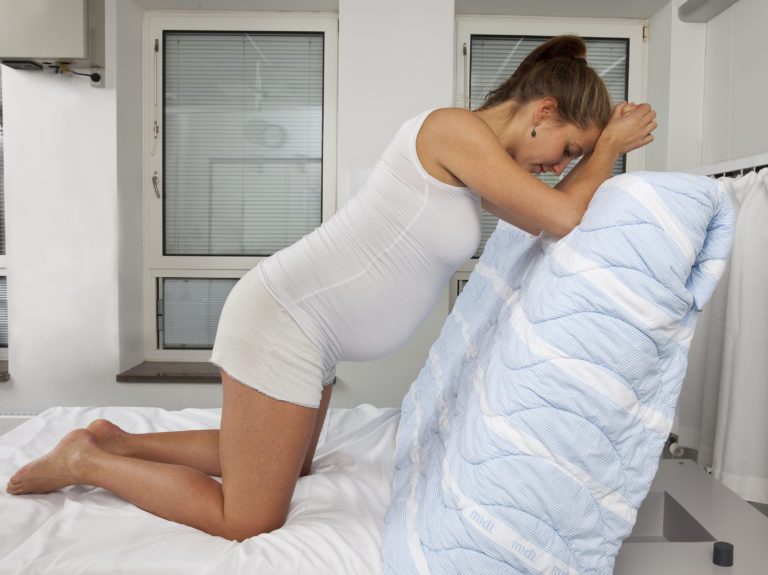You’ve been laboring when you start to feel the urge to push that baby out! There are many pushing positions; it’s not one size fits all. Pushing can be as brief as just a few pushes and baby is born, to pushing for up to 3 hours.
So, it’s good to try different pushing positions as some may work better for you than others. The American College of Obstetrician and Gynecologists (ACOG) recommends frequent position changes during labor to enhance your comfort and to promote all of the twisting and turning baby will do before birth.
The standard position so often portrayed on TV and in movies is mom laying on her back with her legs separated and supported by stirrups or with her hands under her thighs. This position may work for you, but there are alternate positions that you may find more comfortable and could increase your success in having a vaginal birth.
More important than the position is your comfort, mom, in labor. This means whatever position is comfortable for you, is the best position for you—until you feel the need to change positions. Two other common pushing positions are side-lying and pushing while in the bed on your hands and knees.
Side-lying
A side-lying position can be a comfortable position if you’re tired and don’t want to remain in an upright position. Laying on your side increases your rest in between contractions as this position allows your upper body to recline.
The side-lying position enables you to pull your upper thigh toward your chest as you bear down on baby. A family member or your support person can also hold your leg to help keep you positioned on your side.
This position can take pressure off your back and allow you to curl around your baby to promote effective pushing. This position might also reduce your risk of vaginal tearing by opening your pelvis.
Another bonus of the side-lying position is the ability to use a peanut-shaped ball between your legs which will open the pelvic outlet. The ball can be angled so that the leg hooks around the narrower part or aligned with both knee and ankle resting on the ball. If your hips become uncomfortable, you may have to re-adjust the ball. Your nurses will be there to help and support you. If you have an epidural and must remain in bed, side-lying is preferred over lying flat on your back. Lying on your side brings more oxygen to your baby, which can be very beneficial during the pushing process.
Hands and Knees
Going on hands and knees (all fours) is another way to push more comfortably if you’re experiencing back labor.
With this position, gravity can help to push your baby’s head downward. This position is also beneficial if your baby is in a challenging position and is still trying to rotate through the birth canal.
Pause and rest between contractions, especially if your arms get tired while you’re on your hands and knees for a long period of time. While on hands and knees you can elevate the head of the bed and you can turn around leaning forward to stabilize yourself. This is another helpful time to have a family member assist you with stability.
If you have epidural pain relief, this may be a difficult position to get into with narcotics or an epidural on board, so you will have to check with your healthcare provider. If you need a break from being on hands and knees, there are other options on how the bed can support you.
Most hospital beds split into three parts. You can control the upper part in a fully upright position, semi-reclined, or flat. The bottom of the bed can also go up and down to create a platform for your feet. This position, with the bed fully up and feet fully down, is great for laboring with an epidural as it puts the best pressure on the cervix as baby descends, while still being comfortable.
Follow your body’s lead and push in positions that are comfortable for you; happy pushing!
YOU MAY ALOS LIKE: Support During Labor & Birth






Comments are closed.